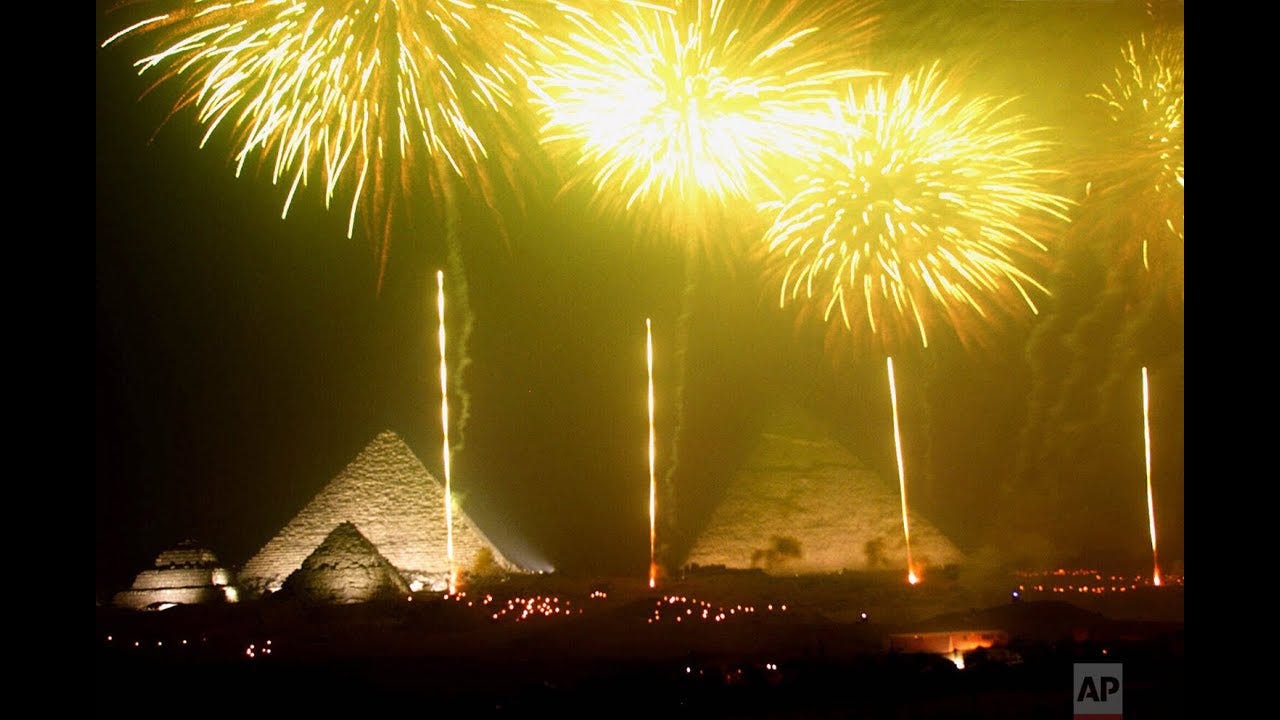New Year: A Kaleidoscope of Global Celebrations and Traditions
The New Year, a seemingly universal marker of time's passage, is far from a monolithic celebration. Instead, it unfolds as a vibrant tapestry woven with threads of diverse cultures, ancient rituals, and deeply held beliefs. From the fiery displays of fireworks illuminating the night sky to the quiet contemplation of personal resolutions, the advent of a new year is a moment for reflection, renewal, and hope, expressed in myriad ways across the globe.
Ancient Roots: The Genesis of New Year Festivities
The practice of marking the New Year stretches back millennia, predating even the Gregorian calendar that dominates much of the modern world. Mesopotamian civilizations, as early as 2000 BCE, celebrated a festival known as Akitu. This multi-day event, tied to the spring equinox, marked the barley harvest and the symbolic re-enactment of the cosmos' creation, solidifying the ruler's divine mandate. Agriculture played a central role, signifying rebirth and abundance. Similarly, the ancient Egyptians linked their new year to the annual flooding of the Nile, a life-giving event crucial for their civilization's survival.
"The wheel of time, a symbol of the eternal cycle, continues to turn, bringing with it the promise of renewal and the chance for a fresh start."
These early celebrations underscore a fundamental human impulse: to find meaning in the cyclical nature of time and to mark transitions with rituals that reinforce communal bonds and express hopes for the future. The Roman festival of Janus, the two-faced god of beginnings and transitions (from whom January takes its name), further highlights this theme. Janus looked simultaneously to the past and the future, embodying the spirit of reflection and anticipation that remains central to New Year observances.
East Meets West: Contrasting Approaches to the New Year
The Gregorian calendar's New Year, celebrated on January 1st, is now widely recognized and celebrated globally. However, its prominence hasn't eclipsed the importance of other cultural calendars and their associated New Year festivities. In China, Spring Festival (also known as Chinese New Year), tied to the lunar calendar, is a weeks-long celebration marked by family reunions, elaborate feasts, red decorations symbolizing good fortune, and vibrant dragon and lion dances. The focus is on honoring ancestors, strengthening family ties, and ushering in prosperity for the coming year.
In contrast, Nowruz, the Persian New Year celebrated around the spring equinox, emphasizes renewal and rebirth. This ancient festival, observed across a wide swath of Central Asia, the Middle East, and the Balkans, is characterized by elaborate preparations like cleaning the house (khooneh tekouni), preparing the Haft-Seen table with symbolic items representing rebirth, health, prosperity, joy, cleanliness, patience and wisdom and lighting bonfires to ward off evil spirits. Nowruz is a celebration of nature's awakening and a time for reconciliation and new beginnings.
The differences between these celebrations highlight the diverse ways in which cultures understand and relate to time. While January 1st often emphasizes personal reflection and future planning, other New Year observances may prioritize communal bonds, ancestral veneration, or the celebration of nature's cycles. It's important to respect and appreciate the unique cultural significance of each tradition.
Superstitions, Rituals, and Contemporary Celebrations
Across cultures, a plethora of superstitions and rituals accompany New Year celebrations. In some parts of Spain and Latin America, eating twelve grapes at midnight, each representing a month of the coming year, is believed to bring good luck. In many countries, the practice of making New Year's resolutions reflects a desire for personal improvement and self-renewal. From cleaning the house to wearing specific colors to warding off bad luck, these rituals demonstrate the human desire to control fate and influence the future.
Modern New Year celebrations often involve large gatherings, parties, fireworks displays, and the sharing of food and drink. Times Square in New York City remains an iconic symbol of the global New Year celebration, with its famous ball drop drawing massive crowds and captivating millions more on television. However, amidst the revelry, it's essential to remember the deeper meaning behind these celebrations: the opportunity for reflection, gratitude, and the reaffirmation of hope for a better future.
Here's a video about New Year Celebrations Around the World:
The Psychological Significance of New Beginnings
The allure of the New Year lies not just in its cultural traditions but also in its psychological significance. The act of marking a new beginning provides a psychological clean slate, a chance to leave behind past failures and embrace new possibilities. This symbolic break from the past can be a powerful motivator for change, encouraging individuals to set goals, develop new habits, and pursue their aspirations with renewed vigor.
However, it's crucial to approach New Year's resolutions with a healthy dose of realism. Unrealistic expectations and overly ambitious goals can often lead to disappointment and discouragement. Instead, focusing on small, achievable steps and celebrating incremental progress can be a more effective strategy for lasting personal growth.
Conclusion: Embracing the Spirit of Renewal
The New Year, in its diverse manifestations, serves as a potent reminder of the cyclical nature of time and the enduring human capacity for hope and renewal. Whether celebrated with boisterous festivities or quiet contemplation, the arrival of a new year offers a valuable opportunity to reflect on the past, embrace the present, and look forward to the future with optimism and determination. Let us carry this spirit of renewal throughout the year, striving to create a better world for ourselves and for generations to come. May the New Year be a catalyst for positive change, both within ourselves and in the world around us, urging us to examine our place in the world and how we can contribute to the greater good.


